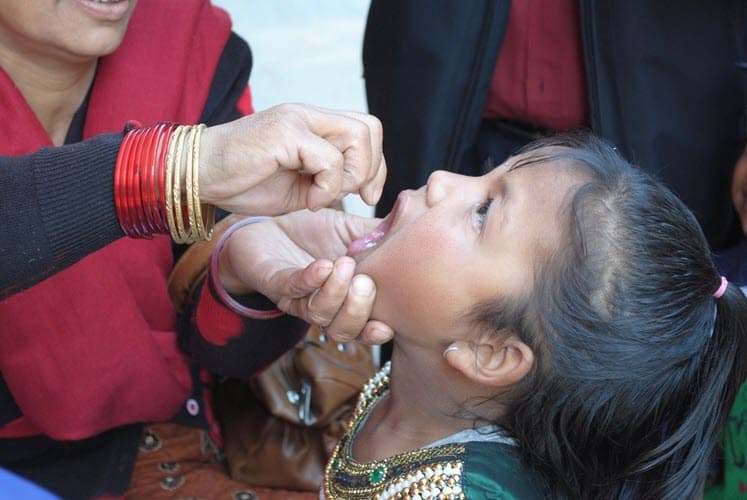Polio: Symptoms, risk, and treatment

Image: WHO/Tuuli Hongisto
Polio, also known as poliomyelitis, is a highly infectious viral disease caused by the poliovirus. It primarily affects children under the age of 5. The virus is spread through person-to-person contact, primarily through the fecal-oral route or, less frequently, through contaminated water or food.
Poliomyelitis (polio) is a highly infectious viral disease that largely affects children under 5 years of age. The virus is transmitted by person-to-person spread mainly through the faecal-oral route or, less frequently, by a common vehicle (e.g. contaminated water or food) and multiplies in the intestine, from where it can invade the nervous system and cause paralysis.
In 1988, the World Health Assembly adopted a resolution for the worldwide eradication of polio, marking the launch of the Global Polio Eradication Initiative, spearheaded by national governments, WHO, Rotary International, the US Centers for Disease Control and Prevention (CDC), UNICEF, and later joined by the Bill & Melinda Gates Foundation and Gavi, the Vaccine Alliance.
Wild poliovirus cases have decreased by over 99% since 1988, from an estimated 350 000 cases in more than 125 endemic countries to 6 reported cases in 2021. Of the 3 strains of wild poliovirus (type 1, type 2 and type 3), wild poliovirus type 2 was eradicated in 1999 and wild poliovirus type 3 was eradicated in 2020. As at 2022, endemic wild poliovirus type 1 remains in two countries: Pakistan and Afghanistan.
In order to raise awareness about the disease, World Polio Day is observed every year on October 24th to raise awareness about the importance of eradicating polio, a highly infectious viral disease that primarily affects young children.
Symptoms and risk
Poliovirus is highly infectious. The incubation period is usually 7–10 days but can range from 4–35 days. The virus enters the body through the mouth and multiplies in the intestine. It then invades the nervous system. Up to 90% of those infected experience no or mild symptoms and the disease usually goes unrecognized. In others, initial symptoms include fever, fatigue, headache, vomiting, stiffness in the neck, and pain in the limbs. These symptoms usually last for 2–10 days and most recovery is complete in almost all cases. However, in the remaining proportion of cases the virus causes paralysis, usually of the legs, which is most often permanent. Paralysis can occur as rapidly as within a few hours of infection. Of those paralysed, 5-10% die when their breathing muscles become immobilized.
The virus is shed by infected people (usually children) through faeces, where it can spread quickly, especially in areas with poor hygiene and sanitation systems.
Treatment
There is no cure for polio; it can only be prevented by immunization. The polio vaccine, given multiple times, can protect a child for life. More than 20 million people are able to walk today who would otherwise have been paralyzed, since 1988, when the Global Polio Eradication Initiative was launched. An estimated 1.5 million childhood deaths have been prevented through the systematic administration of vitamin A during polio immunization activities.
Treatments for polio focus on limiting and alleviating symptoms. Heat and physical therapy can be used to stimulate the muscles and antispasmodic drugs are used to relax the effected muscles. This can improve mobility but does not reverse permanent polio paralysis.
Vaccination is crucial in the fight against polio. Failure to implement strategic approaches leads to ongoing transmission of the virus. Endemic transmission of wild poliovirus is continuing to cause cases in border areas of Afghanistan and Pakistan. Failure to stop polio in these last remaining areas could result in as many as 200 000 new cases every year within 10 years, all over the world. That is why it is critical to ensure polio is eradicated completely, once and for all.
Source: Poliomyelitis (polio) (who.int)
Observer Voice is the one stop site for National, International news, Sports, Editor’s Choice, Art/culture contents, Quotes and much more. We also cover historical contents. Historical contents includes World History, Indian History, and what happened today. The website also covers Entertainment across the India and World.
Follow Us on Twitter, Instagram, Facebook, & LinkedIn

